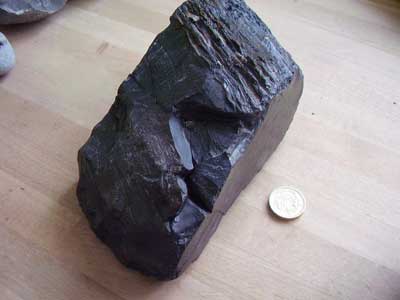
Haydock Place
Endeavour Cottage in Whitby located in the courtyard of Haydock Place.
Today the real splendours of Whitby belong to the past: to the days of the old Saxon monastery of St. Hilda and Caedmon; to the days of the Great Synod in 664, when Saxon kings and the leading ecclesiastic lights of the land met with pomp and circumstance to settle the vexed question of the date of Easter.
In the days of wooden ships and wooden ship building when Whitby was the fith port in England and her sturdy, oak built ships were famed across the seven seas; to the ays when Whitby was one of the chief basis of the Greenland whaling industry and captain James Cook and Scoresby (famous for inventing the Crow’s nest on ships )sailed from the port on their exciting enterprises.
Jet in the height of its popularity 1,500 men regularly employed learning and carving jet and twice this number were engaged in the alum industry along the coast. There is no shipping now. At the dawn of the Great Iron Age some of the “yards” turned to iron, and many fine screw steamers were built on the stocks which then lined the upper harbour. But the shallowness of that harbour and the distance from foundries and rolling mills were fatal handicaps, and ‘Whitby found great competition from its rivals in the ports of the Tees and the Tyne. The alum industry died with the  discovery of a cheaper method of production.
discovery of a cheaper method of production.
Whitby Jet from a peak of prosperity reached in that glum period of court mourning that followed the death of Queen Victoria’s Consort, Prince Albert, the jet trade declined, until today when there are very few craftsmen still able to carve.
The old town’s streets are tortuous and narrow. The names of the chief ones, Baxtergate and Flowergate, suggest that they were built when there were no traffic problems. There is documentary evidence of their existence in the 14th century.
Flowergate climbs down the slope of the West Cliff. Baxtergate runs parallel to the docks. A steel bridge, originally a wooden drawbridge, conducts its bewildered traffic to the east side of the harbour, and here we have the equally ancient and even narrower Church Street again runs parallel to the harbour and leading to the foot of the famous I99 steps which the faithful must climb to attend worship in the parish church, St. Marys.
Whitby is the shopping centre for a wide rural area. Its shops are chieflyin the two main streets and its market backs off Church Street where you find the shops of the jet and fossil dealers. Jet is fossilized wood converted into carbon. It is found in beds know as jet rock, which crop out in several places along the coast. It does not occur in seams, like coal, but in isolated pockets, which made its mining a speculative business. A man might dig for months and not find a handful. A good pocket, however, when the trade was in its heyday, might have been worth anything up to £250.
There is mining now. “That craftsman are left to depend for their supplies on the long shoremen, who collect the bits washed out of the cliff, or from a submarine exposures. While there is diverse opinion regarding the merits of jet as a medium for the true artist, it has inspired some very fine and original carving. It is easy to work and takes on a lovely polish, as different from the glaze of glass and imitation jet as the polish of cheap furniture is from the patina of a genuine piece of Queen Anne. Moreover, while jet is found elsewhere, notably in Spain, Whitby jet is distinctive. Most of the famous craftsmen are dead, and there has been a tendency for their successors to keep to standardized designs.
The fossils which form the second bow of the Whitby jet dealers have "a more strictly scientific  interest. The commonest is the ammonite. It is found in immense profusion along the entire coast, but from the geological point of view its most interesting aspect is its extraordinary variety. The ammonite, of course, was a marine animal belonging to the family of squids and octopuses. Its nearest existing relative is the nautilus. Its variations are distinguished by size, by number and shape of the corrugations of its shell, by the presence or absence of spines or tubercles.
interest. The commonest is the ammonite. It is found in immense profusion along the entire coast, but from the geological point of view its most interesting aspect is its extraordinary variety. The ammonite, of course, was a marine animal belonging to the family of squids and octopuses. Its nearest existing relative is the nautilus. Its variations are distinguished by size, by number and shape of the corrugations of its shell, by the presence or absence of spines or tubercles.
The Ammonite, which is particularly abundant on the rocks at the foot of the Abbey cliff, has given rise to an interesting legend which still finds credence among Whitby fisher folk. They believe it to be the petrified remains of a snake. Rarely, however, is a specimen found with its “head” intact. The story goes that in the days of St. Hilda the district suffered from a plague of adders. The holy lady was prevailed upon to use her influence against them, with the result that first their heads were pried off, and then their bodies were turned into stone.
From the main streets of Whitby Baxtergate, Flowergate, Church Street and from Skinner Street, Sandgate, Haggersgate, and St. Ann’s Staith, narrow lanes twist among the old cottages.The cottages are built in amazing confusion. They give the impression that they must have pushed themselves up, mushroom fashion, from the ground where ever there was space. The majority of them have no view of the harbour set back in time of the yards. The original cottages when they were built tended to stick to a particular floor plan which give the kitchen, parlour, best room, two bedrooms upstairs and usually with an attic. The original architects and builders would be men of the sea. Original it would be most fishermen who lived in them but now the vast majority of them have been converted into holiday cottages of the tourists.
Tel 01274 614650 Mobile (07813) 779273 and email alan@endeavourcottage.co.uk

Endeavour Cottage in Whitby located in the courtyard of Haydock Place.

Across the rooftops of Whitby towards the abbey

A view of Whitby Abbey from a cottage window.

We could provide high occupancy.
Want more booking for your holiday accommodation?
List your property with us. no contract red tape, no setup fee. Just bookings if and when you want them.
Whitby Holiday Cottages Letting Agency.